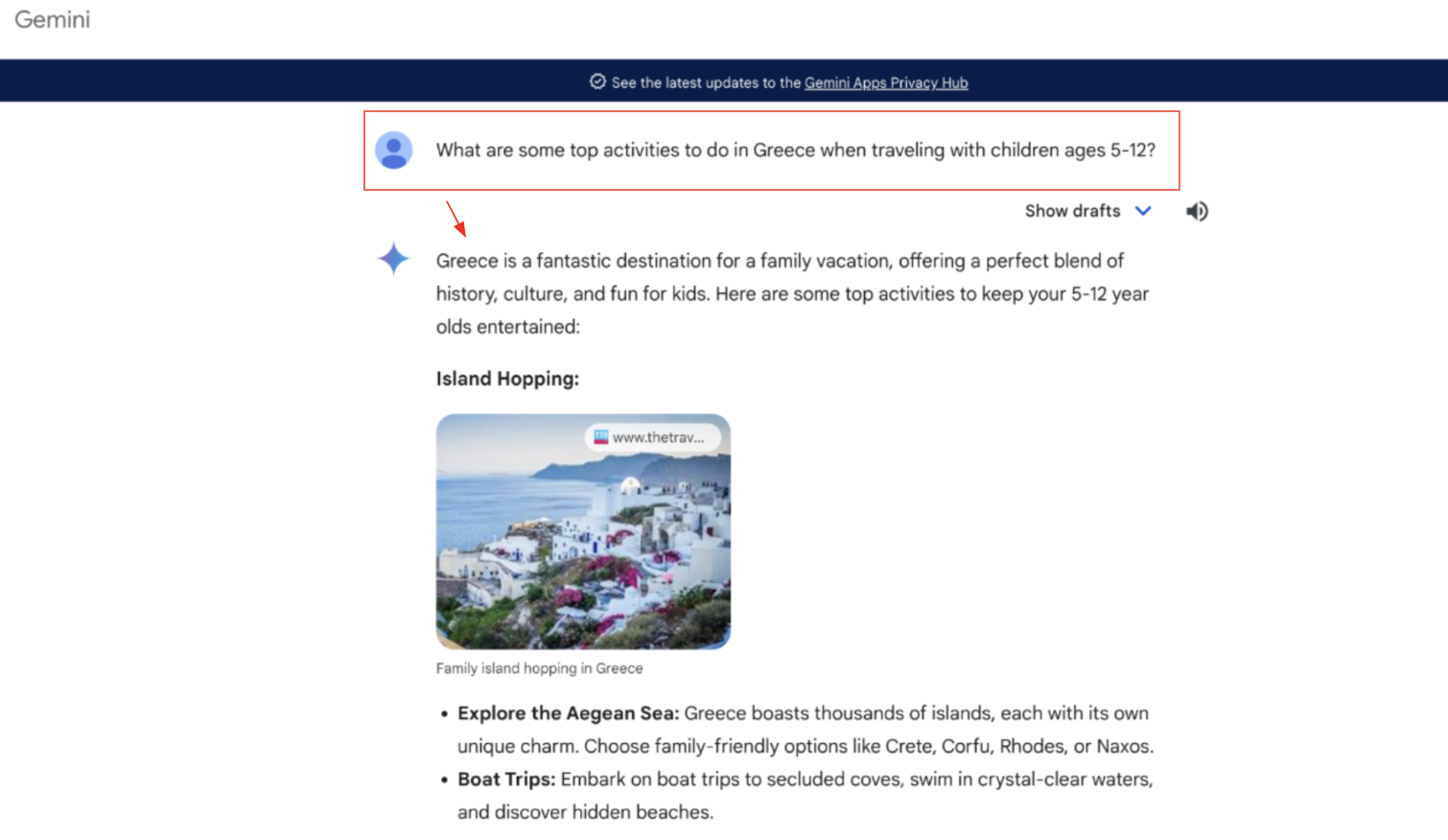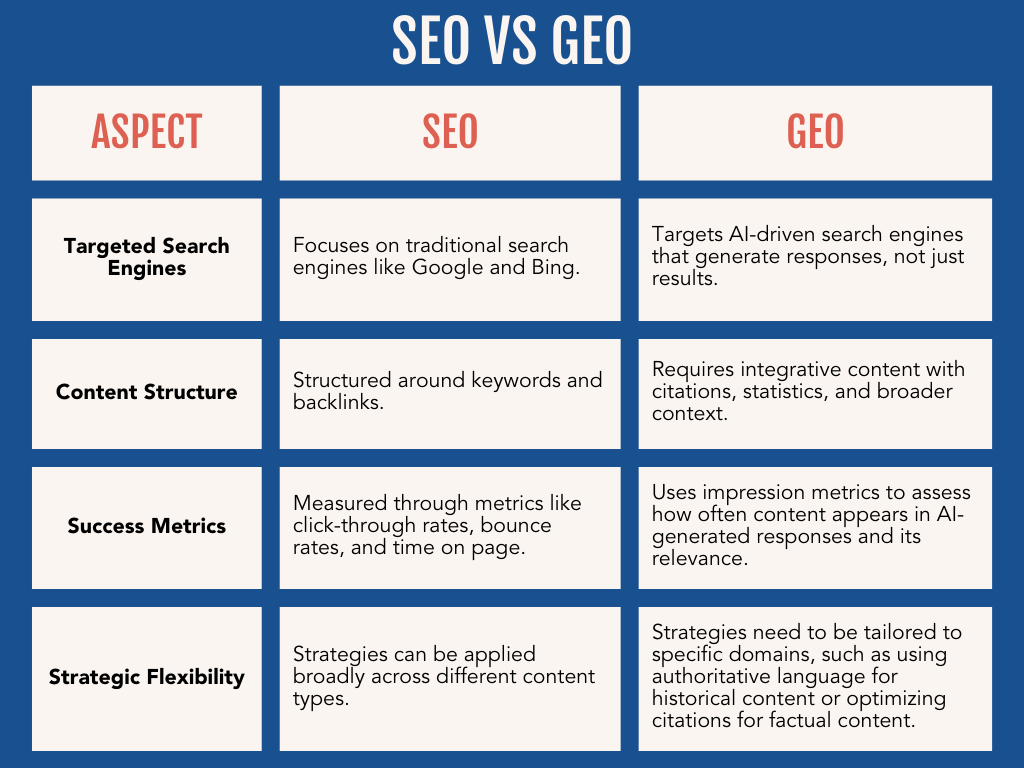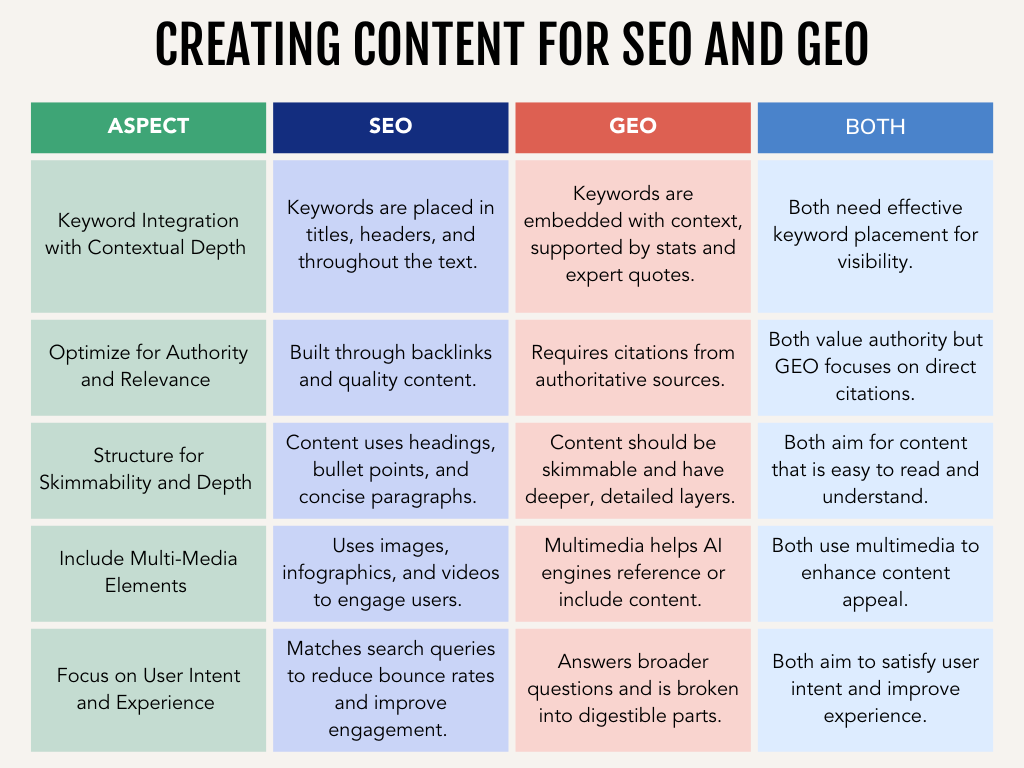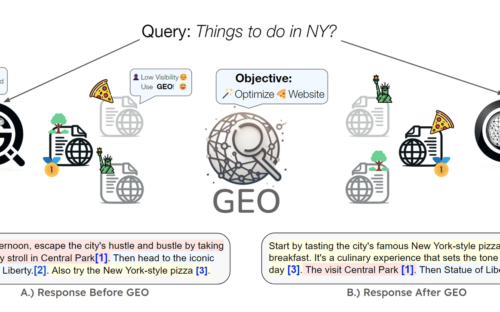Article's Content
Imagine walking into a library hoping to find a book to answer your question: “What are the best strategies for increasing website visibility?” You approach the first librarian, who immediately guides you to a selection of books specifically on digital marketing, carefully organized to address your question. This librarian represents SEO.
You then encounter a second librarian who takes a different approach. Instead of directing you to existing books, this librarian assembles a custom book for you, pulling together relevant insights from multiple sources to answer your question in a comprehensive and unique way. This librarian represents GEO.
This analogy might seem unclear right now, but stay with me. By the end of this, it will all come together. Let’s dive in!
The way we search evolves, so do our strategies for visibility. SEO, the tried-and-true method, focuses on traditional search engines like Google, where the goal is to rank higher in search results.
GEO, on the other hand, is the new kid on the block, optimized for AI-driven search engines like Google’s Search Generative Experience (SGE) and BingChat, where the aim is to appear in the synthesized responses these tools generate.
But how do these approaches differ? And more importantly, how can you craft content that caters to both?
SEO: The Classic Approach
SEO has long been the cornerstone of digital marketing. It’s about getting your website to rank higher on search engine results pages by optimizing these various key elements:
Keyword Optimization: Aligning with User Intent
Keyword optimization involves more than just inserting popular search terms. It’s about understanding the intent behind these keywords and tailoring your content accordingly.
Effective keyword optimization requires thorough research to identify what your audience is searching for and strategically placing these keywords throughout your content.
The goal is to create content that naturally incorporates these terms in a way that answers the user’s query, balancing specificity with engaging, informative content.
Quality Content: Building Trust and Authority
Quality content is essential for successful SEO. It’s not just about length or keyword density but about providing genuine value. High-quality content should be informative, engaging, original, and tailored to your audience’s needs.
It addresses user pain points, answers questions thoroughly, and offers actionable insights. Additionally, content should be well-structured with clear headings and a logical flow, and regularly updated to reflect the latest trends and information.
Backlinks: Building Authority and Credibility
Backlinks from reputable websites are crucial for boosting your site’s authority in search engines. However, not all backlinks are equal; search engines assess the quality and relevance of linking sites.
High-quality backlinks from authoritative sources can significantly enhance your rankings, signaling to search engines that your content is credible.
Building a strong backlink profile involves strategic outreach, creating link-worthy content, and engaging in guest posting on respected platforms.
Technical SEO: The Foundation of Search Visibility
Technical SEO involves structuring your website so search engines can easily crawl, index, and understand your content.
This includes optimizing site architecture, improving page load speed, ensuring mobile-friendliness, and using structured data for better content interpretation. It also encompasses managing XML sitemaps, robots.txt files, and canonical tags to avoid duplicate content issues.
Technical SEO is crucial because it underpins all other SEO efforts; without it, even the best content may struggle to rank.
GEO: The New Frontier
GEO is all about catering to AI-driven search engines. These engines don’t just list websites—they generate comprehensive answers by pulling information from multiple sources.

This means the content you create needs to be optimized not just for keywords, but for how well it can be integrated into these AI-generated responses. Key strategies for GEO include:
Citation Optimization
Citation optimization is about more than just adding links. It’s about strategically incorporating references from authoritative and credible sources that can significantly increase your content’s trustworthiness.
In the context of GEO, where AI-driven engines synthesize information from multiple sources, including well-chosen citations can increase the likelihood that your content will be featured prominently in the generated responses.
These citations should be from reputable sources, such as academic journals, industry leaders, or well-respected news outlets, as AI systems often prioritize credibility when selecting content to integrate.
Properly formatting and positioning these citations within your content also plays a role; they should be naturally woven into the text where they add the most value to the user’s understanding, rather than being tacked on as an afterthought.
Statistical Integration
Statistical integration involves embedding relevant data points within your content to provide concrete evidence that supports the information you’re presenting. This isn’t just about throwing numbers into the mix; it’s about selecting statistics that are directly relevant to the user’s query and that enhance the overall reliability and depth of the content.
For GEO, statistics can play a crucial role as AI-driven engines often look for data to create compelling, fact-based responses. The integration of up-to-date, accurate, and contextually appropriate statistics can help your content stand out in AI-generated results, as these engines use data to substantiate the responses they generate.
Including visual aids such as charts or graphs can further enhance the impact of the statistics you incorporate.
Contextual Relevance
Contextual relevance is the practice of ensuring that your content directly addresses the questions and needs of your audience. It involves understanding the intent behind a user’s query and crafting content that is highly aligned with what they are likely searching for.
For example, if you’re writing about “best practices for remote work,” your content should not only include tips and tools but also address common challenges and provide actionable solutions.
In GEO, contextual relevance is even more critical because AI-driven engines generate responses based on a holistic understanding of the query. The more closely your content aligns with the user’s intent, the more likely it is to be featured in a prominent position in the AI-generated output.
This means structuring your content in a way that flows logically, answers potential follow-up questions, and provides a comprehensive response to the initial query.
GEO is less about standing out on a list of search results and more about becoming a part of the answer itself.
Key Differences Between SEO and GEO
While both SEO and GEO aim to increase visibility, they do so in fundamentally different ways:

- Targeted Search Engines: SEO focuses on traditional search engines like Google and Bing, while GEO targets AI-driven search engines that generate responses, not just results.

- Content Structure: SEO content is structured around keywords and links, while GEO content needs to be more integrative, offering citations, stats, and a broader context that AI can utilize.
- Success Metrics: SEO success is often measured through metrics like click-through rates, bounce rates, and time on page. GEO, however, uses impression metrics that measure how often your content is included in AI-generated responses and how relevant it is to user queries.
- Strategic Flexibility: SEO strategies can be broadly applied across different types of content, while GEO strategies might need to be tailored to specific domains, such as using authoritative language for historical topics or optimizing citations for factual content.
Creating Content for Both SEO and GEO
Creating content that appeals to both traditional and AI-driven search engines requires a nuanced approach. Here’s how to do it:

1. Keyword Integration with Contextual Depth
While keywords remain important, GEO demands that these keywords be embedded within a rich context. For SEO, ensure your primary keywords are strategically placed in titles, headers, and throughout the text.
For GEO, consider how these keywords can be supported by additional information, such as relevant statistics, quotations from experts, or case studies. This not only helps traditional search engines understand your content but also gives AI-driven engines more material to work with when generating responses.
2. Optimize for Authority and Relevance
SEO has always valued authority, but GEO takes it a step further. To appeal to AI-driven engines, your content should include citations from authoritative sources.
This could mean linking to academic papers, government publications, or industry-leading blogs. The goal is to make your content not just informative but a trusted source that AI engines will be more likely to pull into their generated answers.
3. Structure for Skimmability and Depth
SEO favors content that is easy to skim, with clear headings, bullet points, and concise paragraphs. GEO, however, benefits from depth.
This means crafting content that can be both skimmed by human readers and parsed in detail by AI. Think of it as layering your content: the surface layer is skimmable for quick consumption, while deeper layers contain the rich, detailed information that AI engines can pull from.
If you want to check whether your content is structured accordingly for AI engines and spot where there’s room for improvement, you can use a dedicated AI search grader tool which reveals precise details AI engines currently pull from your already existing content.
4. Include Multi-Media Elements
For both SEO and GEO, consider integrating multimedia elements like images, infographics, and videos.
For SEO, these elements can improve engagement metrics. GEO provides additional content that AI can reference or even embed in its generated responses.
5. Focus on User Intent and Experience
Both SEO and GEO ultimately aim to satisfy user intent. For SEO, this means creating content that matches the search query closely and provides a satisfying user experience, reducing bounce rates and improving dwell time.
For GEO, focus on creating content that answers broader questions and can be broken down into digestible parts for AI engines to use.
Bridging the Gap Between SEO and GEO
The worlds of SEO and GEO are not mutually exclusive but complementary. Understanding the nuances between these two strategies is crucial for anyone looking to maximize their online visibility.
While SEO remains essential for traditional search engines, GEO is rapidly becoming a must-have for those looking to stay ahead in the age of AI-driven search.
By crafting content that caters to both, you can ensure that your website is not just seen but becomes a go-to source of information. Whether that’s in a list of search results or as part of an AI-generated answer. The future of search is here, and those who adapt will be the ones who thrive.








